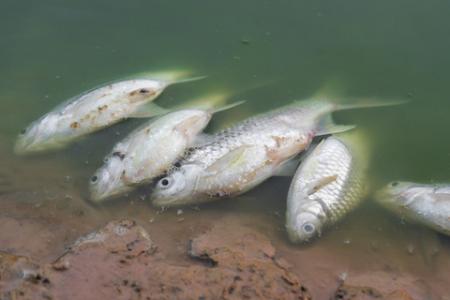| Back to Back Issues Page |
 |
|
The Goldfish Gazette, Issue #034 -- Emergency Response To Dying Goldfish October 29, 2016 |
Goldfish Care Tips and GuidelinesA Free Monthly Resource For Goldfish Enthusiasts In This Issue
There is nothing more distressing than finding your prized fish dying at the surface of your pond or aquarium. Emergency Response To Dying Goldfish
Emergencies can happen to anyone, even experts. Recently I did a 75% water change of an aquarium which housed a single Water Bubble Eye. I was distracted by a visitor. I returned to the aquarium half an hour later to find the Water Bubble Eye at the surface (unusual), lethargic and pale. I quickly realized I hadn’t added Stress Coat® to the water as I refilled the aquarium and the fish was suffering from chlorine burn. I immediately added double the Stress Coat® dose and scolded myself for being so careless. The fish made a full recovery after a few hours. Likely Causes of Sudden Fish Deaths or Distress• Filter turned off/clogged - This was common when I hired aquariums. Cleaners would use power outlets for vacuuming and forget to plug the filters back in.Filters can quickly clog if there is a sudden die off of plants. • Overfeeding – The danger of overly helpful neighbors feeding your fish while you are away can’t be over-emphasized. • Something dies – Aquariums and ponds are very small environments compared to nature. One small fish dying is often enough to cause an ammonia spike. • Summer heat – The temperature variation between winter and summer can be as high as 50oF (27oC), and your aquarium or pond has to be able to support life at these extremes. The hotter water gets, the less oxygen it holds. • Algae – Not the algae that grows on the side of your aquarium or pond, but the suspended form that turns the water green. This algae can release toxins and cause pH spikes. • Equipment failure – A similar problem to the power being accidentally turned off. Once a year UV lamps in clarifiers should be changed and filters checked that the impellers aren’t starting to rattle due to shaft wear. • Overcrowding – This problem can be caused simply by small fish growing. In a growing season, a young fish can double its length which means a fourfold weight increase. • Windblown sprays – This can be a problem if you live in areas of horticultural production. • Ammonia spike – Suspect an ammonia spike if your new aquarium was perfectly fine for about two weeks, then suddenly all the fish are in distress. • Chlorine burn – If your water supply is from a municipal supply, it will contain chlorine or chloramine to some degree. Always use a water conditioner as you can’t guarantee the chemical level will always be at a safe level. • Disease – This is more common in early spring. Diseases such as Costia will bloom on weakened fish coming out of winter. Diagnose The Cause QuicklyThe reaction time to your crisis is usually critical to maximize the number of fish that can be saved.Looking at the list above, the majority of causes are a massive change in water conditions. A disease outbreak is usually more progressive, starting with one or two fish dying. Any fish that die unexpectedly should ring alarm bells. Emergency ResponsesYour response will be slightly different whether it is your pond or aquarium that has the problem.If it is your aquarium, the solution is easy. Avoid compounding the problem by subjecting your fish to pH shock or a large temperature change. Fresh tap water should have a higher pH than the aquarium water, so no need to acclimatize the fish. Either add hot water or a bag of ice cubes to equalize the water temperature before transferring fish if you have time. If fish are dying move the fish immediately. Identify what caused the problem, fix it, then do a complete water change. Don’t forget to clean out the filter. After re-filling, check the ammonia level. It may take two or more complete water changes before the ammonia is zero. Keep checking for ammonia for several days. Add Stress Zyme® to re-populate filters with beneficial bacteria. If it is your pond fish that are in distress and there are too many, or they are too large to move into a smaller container, you will need to use the garden hose to do a 50% water change immediately if you haven’t got enough Stress Coat® for a larger water change. Identify what has caused the problem, and keep doing daily 50% water changes until the water parameters are safe. To learn more about Stress Coat®, Stress Zyme® and water test kits click here... Comments? Ideas? Feedback? I'd love to hear from you. Just reply to this e-zine and tell me what you think, or what topics you want covered. Next Month's Topic UV clarifiers - do they work?www.facebook.com/aboutgoldfish |
| Back to Back Issues Page |